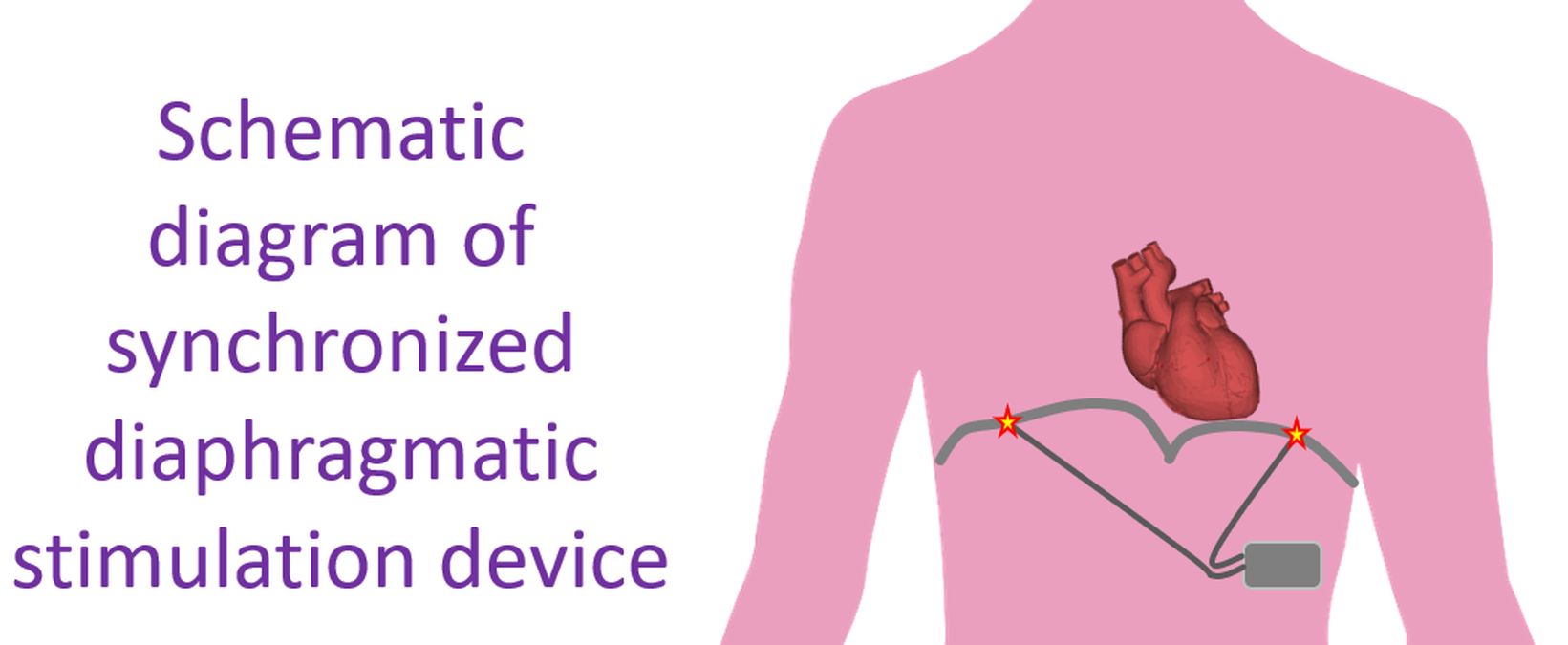Diaphragmatic stimulation in heart failure: Novel concept
Diaphragmatic stimulation in heart failure: Novel concept
Diaphragmatic stimulation is an effective tool for controlling respiration and has been useful in breathing disorders. Left ventricle is in close contact with the diaphragm and diaphragmatic movements may affect left ventricular systolic function.
In an initial report, 35 patients were evaluated within 7 days of an open heart surgery. Hemodynamic impact of pacing induced diaphragmatic stimulation and ventricular pacing configurations were tested. Successful diaphragmatic pacing was documented by fluoroscopy and palpation. Left ventricular systolic performance was recorded using electromechanical activation time by acoustic cardiography. 18 patients were tested in the cardiac catheterization laboratory and 17 in the intensive care unit. Electromechanical activation time significantly improved when the diaphragm was stimulated 20 ms after the onset of ventricular pacing. Diaphragmatic pacing could be induced with or without causing symptoms. Left ventricular systolic performance improved in both instances. These patients were neither pacemaker dependent nor in heart failure [1].
A case report of synchronized diaphragmatic stimulation in chronic heart failure was published in March 2022. Synchronized diaphragmatic stimulation device provides imperceptible chronic stimulation of the diaphragm through a laparoscopically implanted system. The system consists of an implantable pulse generator and two sensing/stimulating leads affixed to the inferior surface of the diaphragm. The device delivers imperceptible R wave gated pulses that alter intrathoracic pressure, improving ventricular filling and cardiac output. The person in the case report had previous myocardial infarction and persistent heart failure with NYHA Class III symptoms despite standard therapies. He had improved quality of life, exercise tolerance, cardiac function and N-terminal pro brain natriuretic peptide through 12 months of follow up [2].

A research letter has also been published on synchronized diaphragmatic stimulation for treatment of symptomatic heart failure in March 2022. This was a first-in-human, single arm, open-label study which enrolled 15 persons with symptomatic heart failure with reduced ejection fraction and NYHA functional class II/III and ischemic heart disease. They reported an implant success of 100%. No implantation procedure or device related adverse events occurred during the 12 month follow up and patients did not sense the ongoing diaphragmatic stimulation. Left ventricular ejection fraction improved numerically in all patients. Significant changes in heart failure relevant parameters were observed at 6 months post discharge, particularly in whom a synchronization level of 80% or more was achieved [3].
A United States Investigational Device Exemption Clinical Trial under FDA Breakthrough as a prospective multi-center randomized safety and efficacy trial with 250+ patients is being planned by the authors.
References
- Roos M, Kobza R, Jamshidi P, Bauer P, Resink T, Schlaepfer R, Stulz P, Zuber M, Erne P. Improved cardiac performance through pacing-induced diaphragmatic stimulation: a novel electrophysiological approach in heart failure management? Europace. 2009 Feb;11(2):191-9. doi: 10.1093/europace/eun377. PMID: 19168496.
- Goldberg LR, Jorbenadze A, Shaburishvilli T, Mirro MJ, Fudim M, Zuber M, Stämpfli SF, Tanner FC, Erne P, Cleland JG. Synchronized diaphragmatic stimulation: a case report of a novel extra-cardiac intervention for chronic heart failure. ESC Heart Fail. 2022 Mar 16. doi: 10.1002/ehf2.13882. Epub ahead of print. PMID: 35297198.
- Fudim M, Mirro M, Goldberg LR. Synchronized Diaphragmatic Stimulation for the Treatment of Symptomatic Heart Failure: A Novel Implantable Therapy Concept. J Am Coll Cardiol Basic Trans Science. 2022 Mar, 7 (3_Part_2) 322–323.
